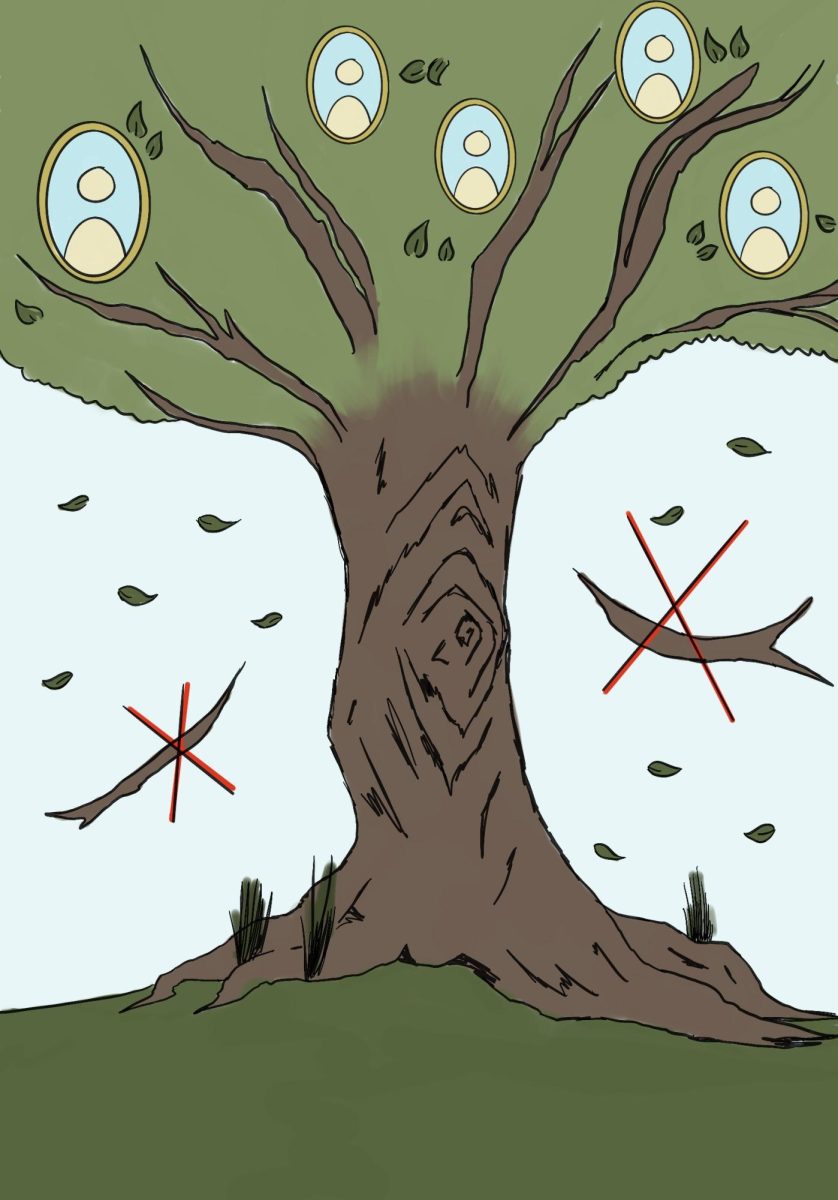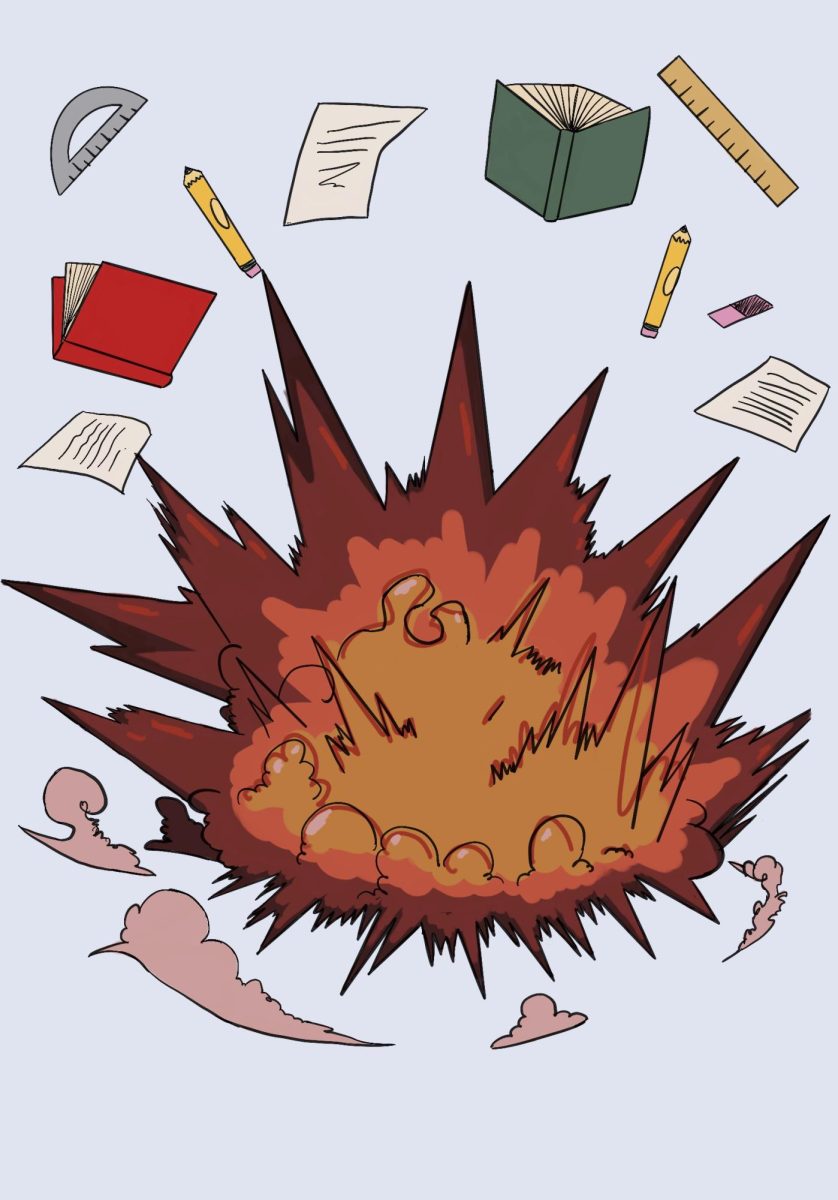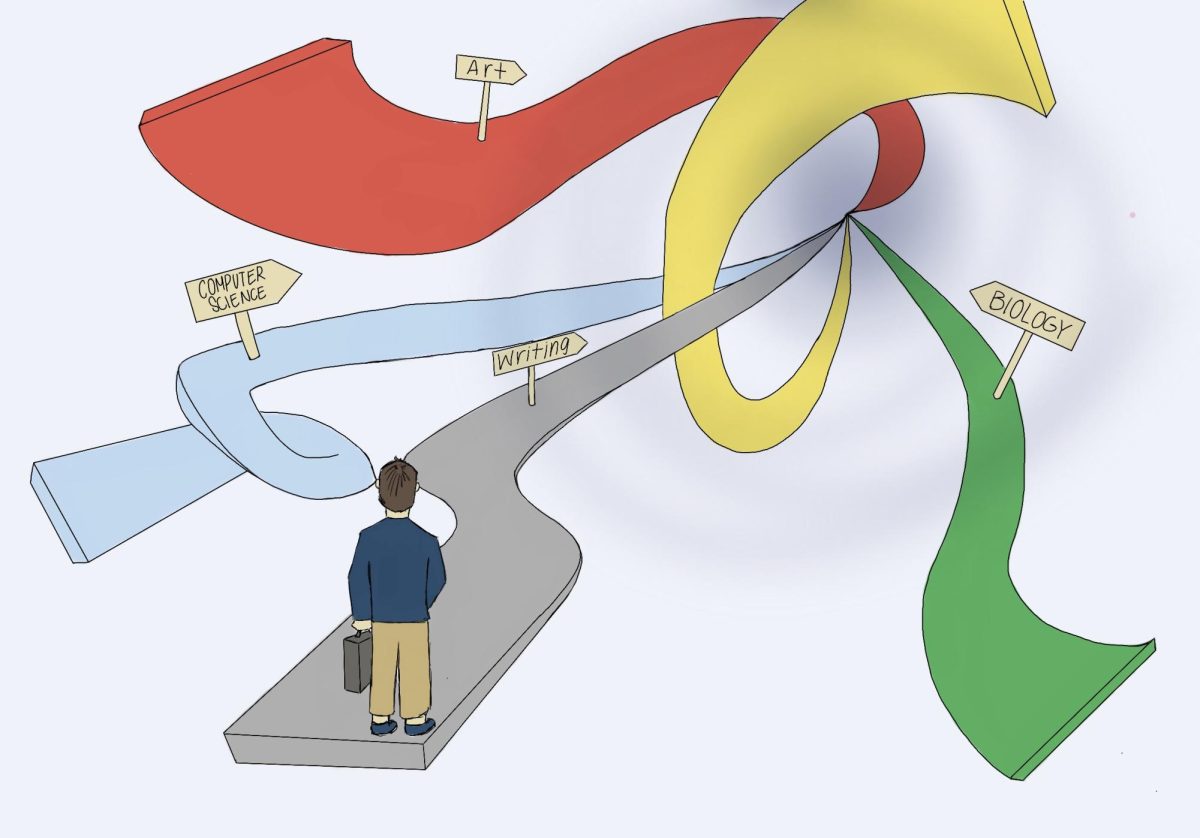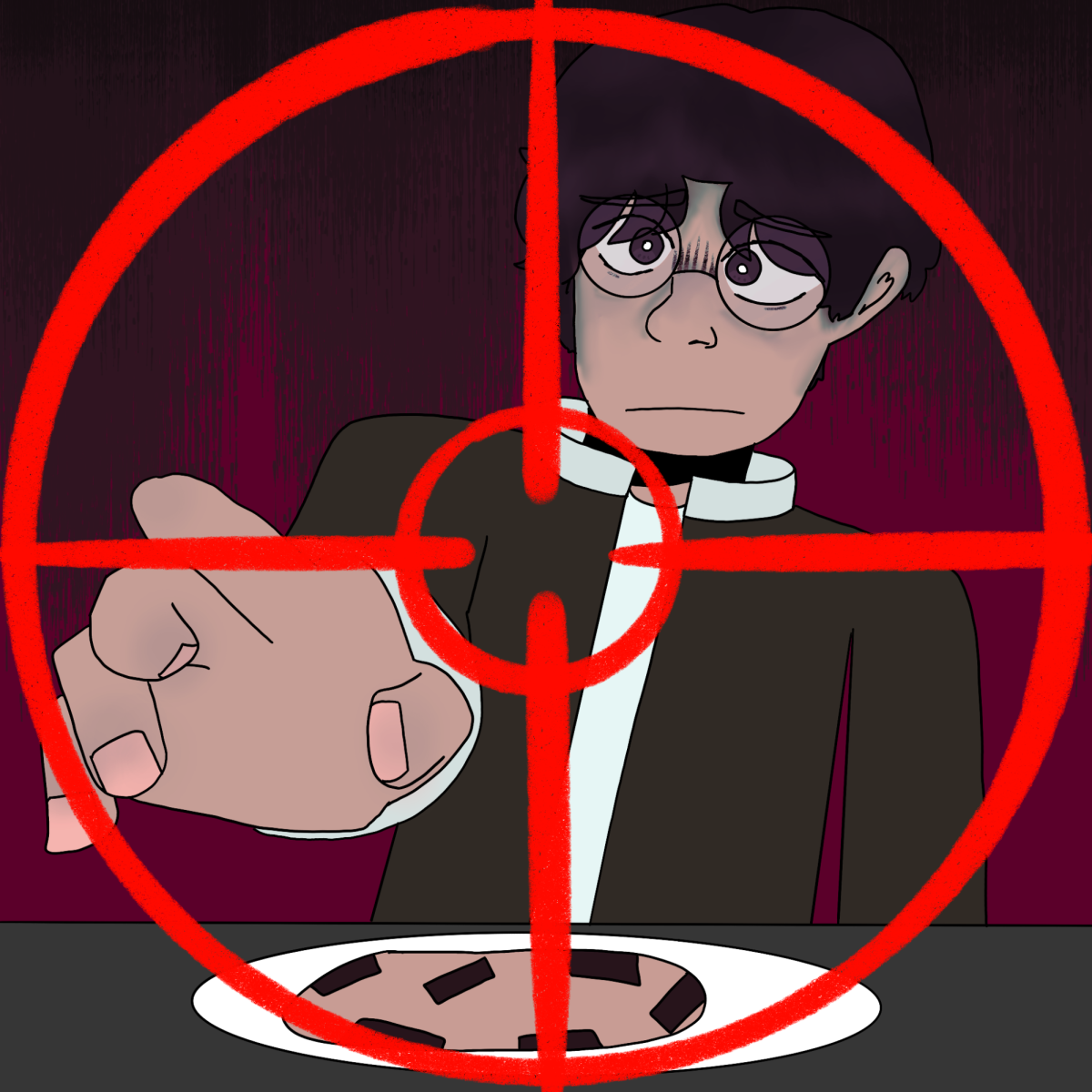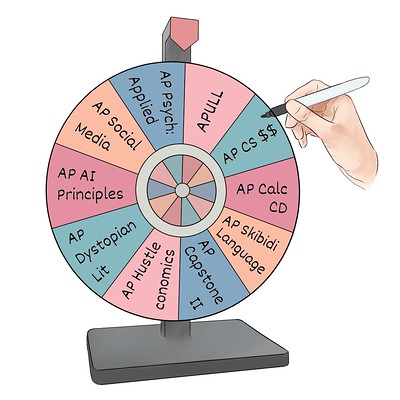
New AP Courses Announced for 2025-2026 School Year
COLLEGE BOARD
May 25, 2025
New York — With the conclusion of the 2025 Advanced Placement® testing season, the College Board® has announced an exciting new lineup of AP® courses set to debut in the fall of 2025. Developed in response to overwhelming student demand, these new APs are designed to prepare students for the ever-evolving challenges of modern society, from navigating the side hustle economy to dodging Turnitin flags. The College Board is proud to offer students the opportunity to earn college credit while tackling rigorous new challenges that reflect the real world and, in many cases, further cement the need for widespread therapy.
AP Computer Science $
A sequel to AP Computer Science A, this course caters to students drawn to CS for the promise of six-figure salaries right out of undergrad, remote work, and a future spent avoiding human interaction. Beyond mere programming, this course tackles the real challenges of the tech world: outsourcing, mass layoffs, and the crushing realization that maybe not everyone is cut out for a career in AI.
Core explorations focus on the stark contrast between Silicon Valley and industry realities — analyzing why most companies are not Google, hence why their first job might involve inheriting a 20-year-old codebase held together by duct tape, forgotten dependencies, and sheer willpower of the original developer (who now runs a goat farm off the grid). The course will also cover essential survival skills, such as deciphering cryptic documentation, maintaining the illusion of competence during a technical (LeetCode) interview, keeping one’s career afloat on weeklong coding bootcamps, and solving off-by-one errors.
AP Exam: Performance Task
Students must develop an app that revolutionizes an industry, only to discover five identical versions already existing on the App Store. Bonus points may be awarded if a venture capitalist ghostwrites to them, offering equity instead of actual funding.
APULL (Understanding Love & Limerence)
The mythical variant of APUSH (AP US History), APULL dissects the regular content of APUSH except with a focus on the art of ‘pulling.’ Students will hone their skills in deciphering historical documents the same way they overanalyze a vague “u up?” text and analyze the dating strategies of historical figures — from chaperoned colonial courtship to modern hookup culture.
Students will also analyze historical moments through the lens of romantic social maneuvering, ranging from Prohibition (the original ‘I swear I’m done with them’ that never lasts) to WWII (the U.S. playing hard to get, reluctantly liking Europe’s distress signals before finally sliding into the D-Day DMs). Additional units include: ‘Manifest Destiny: Expanding Your Romantic Territory,’ ‘The Great Depression: Left on Read,’ and ‘The Cold War: Navigating Mixed Signals.’
Whether it’s Roosevelt’s New Deal becoming a classic case of love bombing the economy, Wilson soft-launching the League of Nations only to get rejected by the Senate, or Nixon gaslighting with ‘you have no proof’ despite getting caught in 4K, students will discover that history, much like modern dating, is just a cycle of mixed signals, strategic rebounds, and power plays.
AP Artificial Intelligence Principles
An urgent exploration of AI’s growing role in both the workforce and the classroom, as well as the resulting existential crisis it causes. Students will examine modern applications of AI, from the moral implications of your history teacher getting replaced by a chatbot to the dark psychology behind pretending you “only used ChatGPT for ideas”. A core element of this course is mastering self-preservation through the art of plausible deniability; students will learn strategies such as adding typos to AI-generated work and how many synonyms must be swapped before an essay is legally considered theirs. They’ll practice explaining to teachers that, actually, AI is merely a “writing assistant” — much like how corporations will soon explain layoffs as “workforce optimization”.
Other key topics include the evolution of “ChatGPTed” into a recognized verb in the student lexicon, and marketing yourself as ‘AI-adjacent’: either as a machine learning specialist or a professional human who gets asked to test if AI can still replace you.
AP Exam
A live debate against an AI model trained on your “own” essays. If the AI wins, it receives your college acceptance letter. If you somehow prevail against your digital doppelganger, congratulations! You may proceed with cautious optimism— until GPT-7 supersedes the entire workforce.
AP Dystopian Literature and Composition
A course reflecting on the essential question: is dystopian literature meant as a warning or just a step-by-step instruction manual?
Students will rigorously analyze “alternate” worlds — starting with 1984, where the Thought Police have conveniently rebranded as “content moderation algorithms,” and Brave New World, where society is numbed into complacency by endless bite-sized entertainment (looking at you, doomscrolling). Fahrenheit 451 warns of a world where books are burned — or, in our case, quietly replaced by algorithmic sludge and mid-tier memes, all in the name of “engagement.” In The Handmaid’s Tale, patriarchy makes a slick comeback wrapped in a red cape and white bonnet, reminding us that “controlling women’s bodies” sounds a lot more palatable as “protecting life”. Snowpiercer keeps the class struggle on track: the rich in first class, the poor plotting a revolution from the caboose, and the whole system barreling toward nowhere, while The Matrix asks the only question that matters: are you trapped in a simulation… or just your 9-to-5?
AP Exam
Free Response II: Either from your own reading or from the following list, choose a work of fiction that could be considered a classic dystopian novel. Then, in a well-written essay, rewrite it, making just enough tweaks so people still think it’s fiction. Essays are only graded if they aren’t immediately mistaken for the daily news.
AP Calculus CD
Designed for students who complained that the “gentle slopes of AB and BC were too forgiving”, this course can be taken straight from regular precalculus (regardless if one got a C both semesters, or even better yet, an A through a summer BYU course), as long as they’re committed to “working extremely hard!”
This course ventures into non-standard analysis and the Riemann hypothesis — which, naturally, students will be expected to prove before lunch. Students will tackle concepts such as “imaginary limits”, existing only in the abstract torment of pure mathematical angst, and “divergent convergence”, where sequences approach infinity with the agonizing slowness of a student waiting for AP scores.
Students will transcend pedestrian suffering by comparing the relative difficulty of AP Calculus courses using transfinite numbers; while AB might be considered a ‘countable infinity’ of tears (ℵ₀), BC is perhaps an ‘uncountably infinite’ ocean of them (ℵ₁). CD, however, exists at a higher-order infinity (perhaps ℵ𝔭𝔞𝔦𝔫), so vast that attempts to measure it collapse into limitless absurdity.
AP Exam
The FRQ section features at least one intentionally unsolvable problem — designed to test students’ resilience in the face of mathematical nihilism — while MCQs may have two correct answers, one of which is correct only in hyperbolic space. Partial credit may be awarded for eloquent expressions of despair.
AP U.S. Government & Politics: Post-Democracy Edition
This course provides a contemporary guide to dismantling democratic institution — all in the name of “saving” democracy from itself. Students will learn to utilize theatrical rallies, aggressive social media tactics, and an “us vs. them” mentality to paint political opponents as existential threats while elevating themself to a near-messianic status, untouchable from multiple indictments and impeachment.
Students will experiment with strategically purging ASB voter rolls under the guise of “election security”, accepting model airplanes from foreign schools as long as it’s “transparent”, and gutting both the nurse’s office and school board through mass layoffs while ignoring long-term social consequences. To round out their education, students will simulate siccing SROs on political rivals while pardoning personal buddies, contemplate whether to tariff the paper imported for AP tests (to really stick it to… someone?), and master the skill of classified document storage — whether that means stashing nuclear secrets in the aux gym or casually discussing military plans in front of hoco guests. Lastly, students will learn best practices for confidential communications, such as avoiding school servers in favor of “private” group chats, taking extra careful notice to make sure nobody is added by mistake.
In a mock election simulation, students will employ creative methods to ensure that peaceful transfer of power becomes a thing of the past, i.e. storming the admin building in elaborate patriotic cosplay. Students should prepare a strategy should they lose, e.g. launching baseless lawsuits, pressuring teachers to “find” just enough votes to flip the results, and convincing supporters that the system is rigged—until they win, at which point it’s suddenly the most secure election in history.
AP Social Media Art and Design
Though most students will claim they’re “not on social media like that”, their screen time reveals a robust minor in thumb gymnastics and a major in microdopamine studies. This course welcomes everyone from the silent majority of non-posting users online solely to find “art inspo” to full-time engagement interns who rack up five hours daily and somehow still “accidentally” like a meal-prepping for a life they don’t live.
Embracing the “clout is currency” economy, where one viral post can pay for rent and a personality, students will dissect the visual grammar of the monthly recap dump (“jan <3”, “mayyy”), a genre composed exclusively of windshield sunsets, mid-bite Taco Bell in bad lighting, and the occasional blurry crying selfie captioned “me literally”. Hands-on practice includes the location-tagged street shot (bonus points for cracked pavement and 0.5x angles) and the resulting debate on whether “Soho” or “7-Eleven” better communicates post-ironic detachment. Students will simulate the rise of “Ask Me Anything Anon” story culture, with lessons on how to plant questions that suggest mystery, depth, and just the right amount of unhinged energy. Replacing outdated gym selfies, students will curate their “unspoken aura” aesthetic — posing mid-stride in sun-drenched outfits to invite thirst comments disguised as compliments on their editing filter… or just the traditional “tuff” and “fire”.
AP Economics: Hustle Mode
In an era where job stability is a myth and health insurance a luxury, this course serves as a step-by-step guide to rejecting the corporate ladder only to end up rebuilding it out of Fiverr gigs, affiliate links, and niche productivity tools nobody asked for. Students will enter the glamorous world of gig work, where rates mysteriously shrink when the job is “fun” or “creative” and every paycheck is a toss-up between actual money or an Instagram story shoutout and a link to a networking event.
Rather than suffer through the dull lectures of AP Macro, students will dive headfirst into the entrepreneurial fantasies sold on TikTok — from the dropshipping empire you can build on your phone (while ignoring the 14-hour days) to the $99 courses on how to “monetize your passions” (spoiler: the course is the passion). Students will quit their 9-to-5s and 5-to-9s to found a startup designed to solve the very problems they created — like an app that connects gig workers with cheaper instant ramen. Successful projects may be submitted to the College Board; top submissions will be reposted on LinkedIn with captions like “just a kid with a dream,” followed by 9 #hashtags and a selfie in front of a WeWork. Because in the end, who needs a boss when you can exploit yourself?
AP Skibidi Language and Culture
In response to complaints of Gen Alpha’s apparent lack of logical communication, this course is engineered to bridge the growing culture gap between Gen Alpha and the unfortunate boomers still attempting to understand them.
Students will develop fluency in Skibidi and its ever-mutating dialects, first defining foundational terms such as sigma, aura, and skibidi (including its various parts of speech), then translating the full 77 (and growing!?) episodes of Skibidi Toilet. Students will experience cultural immersion on a field trip to Ohio, pinpoint the most likely real-world entrance to the backrooms, and write rhetorical arguments on the intricate social hierarchy of rizz gods vs. cooked hairline NPCs. Lastly, this course culminates in a self-improvement unit to help students aura max to sigma rizzlers by teaching efficient mewing techniques, proper mogging etiquette, and how to get the huzz 101.
AP Exam
In the form of a reality check forcibly shoved down their throats, students will evaluate the extent to which modern brainrot — such as the recent resurgence of tung tung (x7) sahur—takes it too far. Students will compare brainrot to “legacy” terms (e.g., face card, lore, ate, fire)… and hopefully consider that perhaps skibidi lore isn’t that different from the drip GenZ once deadass called fire.
AP Psychology: Applied
This course prepares students to thrive in a world where mental health is a top priority — as long as it doesn’t interfere with deadlines.
Through rigorous operant conditioning, students will weigh the pros and cons of paying for professional therapy versus trauma dumping in the group chat for free, and master techniques in responding to someone suggesting “just take a break” like that’s an option. Diagnostic units will focus on the rotating lineup of TikTok slideshow disorders — currently a toss-up between ADHD, dissociation, and “high functioning” anxiety — using zero DSM-5 criteria but an impressive knowledge of aesthetic symptoms.
Rather than outdated theories like Maslow’s hierarchy of needs, students will instead evaluate real-life initiatives, such as Access slideshow presentations where “it’s okay not to be okay” or “get 8 hours of sleep” is recited over the sound of someone crying onto their makeup test. Students will learn to identify signs of stress — preferably through a pastel-colored infographic printed on recycled cardstock and stapled to a bulletin board near the bathroom — and test the therapeutic benefits of sitting in the Wellness Center for exactly 12 minutes before being plunged back into a Physics C lecture. Learned helplessness will no longer be a theoretical term… it’ll be a lived experience.
AP Exam
Students will construct a detailed tier list of coping mechanisms, with “positive affirmations” or “going for a walk” ranked surprisingly low” and “posting vague sad Instagram story rants” edging into S-tier. Submissions will be judged on ability to distract from the real issue — that no amount of bean bag chairs or breathing exercises alleviates the fact that schools demand emotional resilience without reducing academic pressure.
AP Capstone II: The American Dream
A three-year alternative to the existing Capstone curriculum, this course invites students from comfortable zip codes, well-funded schools, and neighborhoods with more Labradoodles than diversity to navigate the Hunger Games-esque competition of college admissions (where the odds are never actually in your favor).
Like its namesake, this course centers on an original Capstone Research Project; students will ascend the traditional tactics of extracurricular stacking and perfect dose of sob story into their essay, instead threading the needle between authenticity and strategic suffering using limited raw material. Core elements include debating whether your second cousin’s gluten intolerance qualifies as marginalization, locating the hardship in a mission trip to Guatemala, and transforming a $4000 pre-college program at Columbia into a “self-funded academic enrichment opportunity”. Students will craft palatable narratives of inner struggle, such as the trauma of being waitlisted for JV tennis or deep identity crisis sparked by switching from oat milk to almond, all to portray their schedules as a survival mechanism for “coping with internalized pressure from systemic norms of success”.
After acceptance letters are posted (and strategically screenshotted for Instagram), the final unit reconciles why once-certain career paths now feel like a life sentence. Through guided reflection, students will confront the creeping suspicion that college admissions was less a finish line and more a $200K detour to a job — or worse, a LinkedIn bio that still reads “aspiring.”
As students eagerly enroll in these new AP courses, the College Board remains committed to its not-for-profit mission of preparing young minds for the future — regardless of whether that future is one of job automation, political extremism, or serving the College Board monopoly pipeline.
So sharpen those No. 2 pencils, prep those five-paragraph LEQs, and embrace the impending burnout — because the AP Program isn’t just about academic excellence; it’s about survival in our modern society. Good luck, future scholars. You’re going to need it.
Sincerely,
Advanced Placement Program

